Research Article 
 Creative Commons, CC-BY
Creative Commons, CC-BY
Study on Aspects of Bodybuilding and Fitness Practitioners’ Motivation and Weight Training Routine
*Corresponding author: Elena Mihăiță, National University of Physical Education and Sports, Doctoral School, Bucharest, Romania.
Received: May 10, 2023; Published: June 07, 2023
DOI: 10.34297/AJBSR.2023.19.002553
Abstract
Physical activity is an essential element in maintaining psychophysical well-being. Workouts with specific weights for bodybuilders and fitness practitioners, sports that act for body shaping, adopting a healthy lifestyle and in order to participate in competitions organized by the Romanian Federation of Bodybuilding and Fitness involve considerable physical and mental strength to reach goals. followed. These aspects are highlighted by international studies that have researched “exercise in the gym, the perspectives of selfdetermination theory” or “training programs designed for muscle hypertrophy in bodybuilding”, “personality traits of bodybuilders and relationships with anthropometric variables and sports behavior” and others. The aim of this study is to know the aspects of muscle strength, motivation for training or emotions experienced during exercise, as well as training plans.
The study was conducted in the form of a survey addressed to athletes practicing bodybuilding and fitness, gym subscribers/ legitimized or illegitimate at a sports club, competitive or non-competitive, by completing an opinion poll, own concept, suggestively called “Go to the gym”. The data were collected from 60 bodybuilders and fitness practitioners, in order to investigate aspects related to the motivation to practice bodybuilding and fitness training, weights used and training routines. The expectations of young practitioners are ambitious, and they are motivated to become champions while older practitioners want to maintain a healthy lifestyle by performing bodybuilding and fitness training.
Keywords: Bodybuilding, Muscle strength, Motivation
Introduction
The bodily beauty together with the beauty of the harmony of the movements have been, from all times, the most praised and sought after esthetic values. Body plasty, “kalos” correlates with “agathos” from the expression of the ancient Greeks “Kaloskaiagathos”-beautiful and good. Kalokagathia represented the aesthetic conception of the philosophy of the ancient Greeks, according to which beauty (kalon) was in the indissoluble union with good (agathon), esthetics with ethics. This concept was developed by Socrates and Plato, in whose conception beauty can exist only as a manifestation of what is moral. Unlike other eras, the concept of the human body is no longer a simple “material support” in which the spirit of the individual wells. He is increasingly an important component of the human personality.
The phenomenon of kalokagathia, developed by Greek writers and philosophers in the V-IV centuries before Christ was described as a combination of two adjectives, kalos denoting outer perfection, and agathos - inner perfection, the author [1] finds it difficult to give a proper translation of the terms kalokagathia and kalos kagathos therefore it would be more appropriate to transliterate both, the concept of beauty crossing between cultures and generations until now. According to Juvenal’s saying “MENS SANA IN CORPORE SANO” if the human body functions in optimal parameters all functions are at the same level, so the concern for maintaining optimal health expressed through physical appearance is a condition of modern fitness. If fitness shapes the physique, bodybuilding highlights it and the psyche through motivation, perseverance, self-improvement, attitude puts it in value.
Bodybuilding and especially fitness is gaining in our society an increasingly important purpose not only through the competitive system but especially through what it offers to the average person: pleasant leisure, improving health, forming a body esthetic positive, physical and mental relaxation, self-confidence, personal dignity, or gaining respect from others. The increase in strength invariably leads to an increase in muscle mass, maximized growth in bodybuilding training, giving athletes and coaches the opportunity to create a work of art from their own bodies while inoculating the ideal of beauty, strength, power and health of physical and psychic. Polish researchers [2] investigated whether increasing muscle mass may have dysfunctional aspects in some bodybuilders, data being collected from 108 men, concluding that the group of practitioners is heterogeneous, only one-fifth of men at high risk of physical deformity, and may have symptoms of the disorder. On the other hand, a substantial majority of men have a low or medium risk of developing the disorder (Figure 1).
The benefits of using strength exercises for the body, by solidifying tendons and ligaments, improving the ossification process, improving muscle contraction and increasing self-esteem, optimism and strengthening the personality contribute to the natural beautification of the physical appearance during youth and maintaining it for as long as possible. Also, the practitioners of this sport are the most long-lived, their beauty and bodily vitality can be valued even in old age when most people are concerned about the possibility-necessity of fulfilling ADLs in conditions of poor health.
In this regard, the authors [3], consider that weightlifting or resistance training is a strong stimulus for the neuromuscular system. Depending on the specific design of the program, resistance training can increase local strength, power or muscular endurance. These performance improvements are directly related to the physiological adaptations caused by prolonged resistance training. Optimal endurance training programs are individualized to meet specific training objectives. When properly trained (intensity and similar volume), these functional and physiological adaptations are just as impressive among women and the elderly as in the case of young men. Of equal importance, probably especially among the elderly, are the important health benefits that can also be derived from resistance training (Figure 2).
For example, bone density, insulin sensitivity, and obesityassociated comorbidities can be effectively managed with resistance exercises when performed regularly. The extent of functional and health benefits that accrue from endurance training depends on factors such as initial performance and health, along with the specification of program design variables such as frequency, duration, intensity, volume, and rest intervals. Basal metabolism consumes approx. 1cal./kg body/hour, [4] to which are added the energy expenses by moving the whole body or its segments. One way to calculate daily calorie intake is as follows:
a) consumption of basal metabolism = G (kg) x 24hours.
b) energy metabolism consumption
c) sedentary = approx. 400 calories/24 hours.
d) moderately active = 600 calories/24 hours.
e) active = 800 calories/24 hours.
f) Example: in an active person weighing 75kg, the daily consumption will be of
g) 75X24 = 1800+800 = 2600cal.
In bodybuilding is used in the period of muscle mass hyperprotein ration, by additional protein of 3-3.5 g/kg/day, for 8 weeks and the use of exercises to increase strength and muscle mass, active mass can increase by 2-3-kg, while reducing the thickness of adipose tissue. It also increases strength by about 15%. In order to maintain his weight of 75kg, the person must insure himself by diet, a caloric intake not exceeding 2600 caloriesper day, this representing the normocaloric diet. Therefore, the daily calories intake required by a bodybuilder to achieve significant increases in strength and muscle mass in particular are at least equal to or greater than the consumption needs of energy metabolism, the number of calories consumed for those with muscle mass well above the IBM index (body mass index, for athletes it is not valid) can be doubled or tripled, following a diet rich in protein, with a low intake of lipids and carbohydrates (Figure 3).
Technological progress, especially computer science, has greatly diminished physical activity in the work process, so the transition from movement to leisure tends to a routine, recreational sport, which becomes the habit of practicing physical exercises leading in time to the need movement, as are the needs of Masslow’s pyramid. Any behavior is based on the action of a cause that answers the question why ?, why it occurred even without a purpose. Motivation contains the answer to the question, why? In the broadest sense, the term motivation represents” a specific form of reflection that signals to the command-control mechanisms of the personality system an oscillation from the initial state of equilibrium, an energy-informational deficit or a need that must be satisfied” [5].
The same author highlights recent trends to “exceed the neurophysiological and neurohormonal level in explaining the mechanism of emotions, claiming the need for admission and higher levels-psychological and psychosocial” concluding that, “people’s emotions are included as an essential factor of interactions and interpersonal, intergroup cohesion ” and “motivation transforms the human being from a simple receptacle of external influences, into an active and selective subject, with its own internal determinism in choosing and triggering actions and behaviors”. Many bodybuilders and fitness practitioners have become great champions, later declaring that they have found their vocation.
The study of researchers from Switzerland and France [6] on 175 Swiss bodybuilders applying the trans-contextual model of motivation to the impulse for muscular behaviors of male bodybuilders at risk of developing muscle dysmorphia, being examined the relationships between the theory of self determination, builds and stimulates muscular behaviors, through the theory of behavioral variables. The final analysis of the route supported the motivational sequence, with autonomous motivation for sports showing a positive, significant and indirect association with the impulse for muscular behaviors through perceived behavioral control and intention to gain muscle mass and controlled motivation for sports showing a positive association stimulates muscular behaviors both directly and through attitude and intention to gain muscle mass.
Motivation must also be considered as a general law of organization and functioning of the entire human psychic system, it operating the necessary distinction between pleasant and unpleasant, useful and useless, between good and evil, thus all other psychic processes represented by perception, thinking, memory, will, as well as the character and aptitude components of the personality are subordinated to the law of motivation, their content revealing the meaning and the “motivational” valences of the surrounding objects and phenomena. On the other hand, participating in a national, international, world or grand prix competition by invitation is an accomplished goal in which case the aphorism is important to participate not to win or you won continuously, you did not win continuous urges perseverance and to improve the sports form in order to achieve the proposed goals.
That is why the opinion of bodybuilders and fitness practitioners is particularly important in our effort to establish a motivation profile based on concrete answers to questions related to the motivation of the training routine in order to achieve the proposed goals. Implementing an intervention program to help an athlete develop a series of specific mental skills in order to improve performance or satisfaction/pleasure to train or increase motivation, according to [7] is the prerogative of sports psychology that has an important role in performance and leisure sports.
The international literature treats with more interest the aspects related to the relationship between somatic and mental typology in sports, many studies being directed to bodybuilders due to the visual impact of a gladiator, the beauty and combativeness that a bodybuilder gives, by studying the morphological profile of bodybuilders brazilian elite in the competition season by [8], a group of 28 male athletes (27.0+/-7.4 years; 78.2 +/-8.7kg; 170.1+/- 6.9 cm). Anthropometric measures (body mass, stature, thickness of skin folds, perimeters and diameters) were collected from all subjects on the day of the competition. The estimated values of the athletes’ body composition were as follows: relative body fat, 5.8+/- 0.5%; lean body mass, 73.6+/-8.2 kg; muscle mass, 54.3+/-6.7 kg and muscle area of the arm, 108.51+/-15.19 cm. Instead, the mean somatotype found was: endomorphy, 1.11+/-0.29; mesomorphies, 8.26+/-0.67; ectomorphy, 0.95+/-0.53 (balanced mesomorphy).
In addition to high levels of muscle development (similar to 70%) and low accumulation of body fat, bodybuilders also showed uniformity in the accumulation of localized fat. The conclusion was that the predominance of the mesoform component confirmed the remarkably developed muscle structure found in the investigated athletes, the results of the study showing that elite athletes who build their body have a large amount of muscle volume and excellent muscle definition, proportionality and symmetry in competition. examine bodybuilding-related factors, which include resistance training (RT) interventions and Portuguese researchers [9] analyzed the current body of evidence to the effects of effort-induced muscle changes in muscle thickness, cross-section (CSA), muscle strength and body composition, being selected through research in the databases Pubmed/MEDLINE, Scielo, EBSCO, LILACS, Sport Discus, Web of Science and CINAHL (with the words “Endurance training” and “hypertrophy” in bodybuilders and variations involving these results), fourteen studies that investigated the long-term training routines of bodybuilders.
These studies demonstrate a pattern in training activity, through which there is a separation of training into four distinct periods: off-season, pre-competition, peak week and postcompetition. Each period has a specific load spectrum of intensity, total training volume and type of exercise (multiple or single joint). The conclusion was that bodybuilders’ training programs had in common a higher intensity task, a smaller number of repetitions and longer rest intervals in the off-season than before the competition. Other extremely important and interesting international studies that in our country are too little initiated regarding perspectives of self-determination theory, the authors [10] investigated the reasons for the practice and motivational regulations of men and women engaged in weight training through a descriptive crosssectional study with 252 weight training followers (133 men and 119 women). Questionnaires were used to collect data. The conclusions of this study highlight that men and women are selfdetermined to practice weight training and weight loss is positively associated with introjected regulation and muscle gain in women and men for the reason “health and well-being”.
Also, the increase in muscle mass correlated with the intrinsic motivation and the index of women’s self-determination. The reasons “health and wellness” and “leisure and socialization” were also linked to the identified regulation, intrinsic motivation and selfdetermination index. Older women presented a higher introjected regulation, as did those who have been practicing bodybuilding for over a year. Women who have been training with weights for more than five years have had a higher regulation identified. Another study similar to our initiative of the authors [11], tested the relationship between integrative motivation and the reasons for practicing physical exercises depending on the frequency and type of practice, at a number of 358 subjects trained in the gyms performing guided exercises and bodybuilding exercises, being measured the integrative motivation and the reasons for the practice.
After the descriptive and differential analysis, the data showed that people who participated in fitness programs were more concerned about image and social recognition. Data on the frequency of practice showed that exercising any type of physical activity or sport in fitness centers, more than three days a week, was positively related to motivation and most reasons for practice. The results were discussed in connection with the optimization of physical activities and sports programs by the arrangement between the type of exercise and the different reasons. A study topic similar to our research was initiated by researchers in Spain, [12] who analyzed the differences in personality traits of the participants, respectively 218 (competitive, non-competitive and sedentary bodybuilders), confirming differences between the researched groups in terms of the personality factors investigated: reasoning, sensitivity, abstraction, on the other hand, the participants in the two active groups obtaining a higher score on the perfectionism factor.
Muscle hypertrophy is the main indicator of the effectiveness of bodybuilding and fitness training as well as other sports, according to [13], subjected to strength training, the muscle enlarges or hypertrophies as a result of increasing the number of myofibrils on the muscles, numerous studies being directed to know the growth and development of muscle mass through training and nutrition. In order to discuss the thesis that in the early phase resistance training-RT (<=4 previous RT sessions) increases in muscle cross section are largely attributed to muscle swelling induced by muscle injuries then (after similar to 10 sessions), a modest magnitude of muscle hypertrophy results but only during a last phase of RT (after similar to 18 sessions) is true muscle hypertrophy observed. The researchers [14] concluded that muscle damage is not the process that mediates or potentiates resistance training (RT) induced muscle hypertrophy.
Also [13] consider that the structure of muscle fibers has a major influence on the athlete’s ability to manifest maximum strength, type II fibers (with rapid contraction) are associated with strength efforts, while type I fibers (with slow contraction) being adapted to resistance efforts. In this regard, the authors [15] investigated whether a higher hypertrophy of the type I muscle fibers can be induced with low load resistance training. Strength training with high loads (>=60% of 1 maximum repetition RM) can lead to a higher increase in type II muscle fibers, while resistance training with low loads (<60%of 1RM) could primarily increase the hypertrophy of type I muscle fibers. Type I and II muscle fibers have certain distinct characteristics, type II muscle fibers having faster calcium kinetics, faster shortening speeds and the ability to generate more power than type I muscle fibers. Alternatively, compared to type II fibers, type I muscle fibers have a higher oxidative capacity and a higher fatigue threshold. Due to the lower fatigue of type I muscle fibers, it can be assumed that a longer time under load is required to stimulate a marked growth of these fibers.
Because in international competitions, especially at Mr. Olympia, the competitors are real giants with an incredibly large and extremely prominent muscle mass weighing tens of kilograms in addition to the weight corresponding to the waist, the interest in natural bodybuilding has increased. In natural bodybuilding competitions, large differences of tens of kilograms in addition to the weight relative to height are no longer accepted, participants being regularly tested for banned substances (steroids or diuretics) and are suspended or even excluded from competitions for positive results.
In this regard, international studies have been developed on excess muscle mass as a condition, megarexia as opposed to excessive weight loss anorexia, an important contribution being made by the study of italian researchers [16] muscle dysmorphia is considered a subtype of body dysmorphic disorder with a high prevalence at bodybuilders. Symptoms related to muscle dysmorphia (Inventory of Muscle Dysmorphic Disorders, MDDI), depression (Inventory of Back Depression, BDI) and narcissism (Inventory of Narcissistic Personality, NPI) (among other dimensions) were evaluated in 260 subjects, competing and non-competing bodybuilders. The researchers’ results suggest a potential interaction between muscle dysmorphic symptoms, narcissism and depression, with a stronger association between narcissistic features and the development of more severe muscle dysmorphic conditions in competing bodybuilders.
Practicing bodybuilding and fitness requires organizing life by adopting a healthy lifestyle due to the routine of training, diet (hyperprotein to promote muscle growth, hypoglycemic to reduce fat) and rest, physical fatigue and negative stress parametric affect and muscle strength level. By increasing the number of people who adhere to the concept of sport for all, choosing a form of movement as a way to spend free time in this case “going to the gym” outlines the triad of need for exercise-healthy eating-rest for the good felt physically through the tone muscle and a body weight index in optimal parameters and at the mental level by reducing the level of stress, nervous discharge by lifting / pushing weights and mental relaxation. At the same time, the lack of movement and the hours spent in front of the devices in incorrect positions in terms of body alignment lead to an increase in the number of obese people, diseases associated with sedentary lifestyle and the feeling of physical and mental discomfort.
People react differently when they are in direct or indirect competition with someone, so they are capable of more effort and discipline when they have to follow a program or when they are part of a group/team. Going to the gym becomes a state of affairs, “a to do”, a routine after work, necessary for the body to tone up and charge positively by meeting the proposed goals higher or lower depending on the goal. Thus the beginners become passionate, the enthusiasts become athletes, the athletes inspiring through strength and physical and mental beauty those around them in different stages of practicing weight training, the cycle resuming. From the observations over 20 years in different bodybuilding and fitness rooms, as well as from the answers of the participants in this study, the motivation of bodybuilding and fitness practitioners has different connotations depending on age as follows:
A. normal weight young people want to increase their muscle mass both for the visual aspect and the increase of selfesteem and for a privileged position in social context due to muscle hypertrophy and young women especially for a supple but athletic figure with an obvious muscle tone.
B. adults both men and women want to maintain a body weight in optimal parameters, good health while maintaining effort parameters on a plateau with small fluctuations, some integrating forever in their lifestyle the routine of weight training in in terms of program complexity, nutrition and rest. A part category is those who realize that they do not feel well if they do not train, the values of tone and muscle strength decrease rapidly during periods of interruption of more than a month.
C. the gym is accessible to everyone, the elderly find a remedy for the elderly and prevent the installation of others specific to the passage of time as well as the habit of training, pulley machines or modern technology reducing the extra effort to prepare the device/ the bar for the next series/exercise with weights as well as the risk of injuries that are more difficult to recover and maybe with sequelae after a certain age.
The main methods for developing muscle strength and mass according throughout the practice in the field are:
a. The “pyramidal growth” method of the load.
b. The “pyramidal rise and fall” method of the load.
c. The method of increasing the “double steps” of the load.
d. Isometric contraction method. The “circuit” method.
e. Method of efforts to the point of refusal. It has great applicability in bodybuilding especially for periods of muscle definition.
f. “Power Training” method.
Known as “Weider” training methods in bodybuilding and fitness (Ghid-de-antrenament-weider, 2019) the following techniques gathered over the years by Joe Weider from behind the scenes of the training of great champions and not only can lead to substantial increases in muscle mass and strength with highlighting the striations of peripheral muscles.
a. The method of progressive increase of the workload.
b. Contraction isolation method.
c. The method of muscle “confusion”.
d. Priority work method.
e. The method of staggering muscle groups.
f. Method of total blood irrigation of the muscle (capillarization).
g. “Cheat” execution method.
h. Tri-set method.
The following combined and advanced training methods have applicability in the training of experienced athletes, requiring large and very large physical and mental efforts.
a. Giant series method.
b. Double split training method.
c. “Burning” method.
d. The method of mental attitude.
Other less used methods that involve a special control of the movement are:
a. Method 21 or Magic 21 suitable for pushing exercises for the muscles of the chest, shoulders, biceps, triceps.
b. The method of doubling the movement.
c. Drops method for extreme pumping.
Total training method. It is practically a summum of the listed methods, methods corresponding to the athlete’s training degree. We consider that total training exceeds the limits of the training room, extending even to the social and personal life of the athlete. By saying this we refer to the moment of recovery and scientific nutrition, to the moments of rest whether active or passive, to the phenomena of overcompensation, to the socio-professional activities of the athlete. To the extent that an athlete manages to thoroughly address all these aspects of training, we can say that he has valuable chances to access great performance in sports.
All these methods are part of the athletes’ practice, each customizing their training according to their own body’s response. We could constitute distinct research in the attempt to classify them from the most efficient to the weakest, from the most used to the least used by bodybuilders. In general, the training is similar to the athletes within a group, club, bodybuilding gyms, nationality, depending on the training method and the specialized knowledge of the coach/instructor, etc. The effects of two of the training methods listed above were studied by the authors [17] who investigated the effects of two different resistance training (RT) protocols on hypertrophy and muscle strength in 16 athletes, divided into two groups, for 16 weeks. The first group (n = 8) performed a single drop set (DS) and the second group (n = 8) performed 3 sets of conventional RT (normal set, NS). Hypertrophy was assessed by imaging, magnetic resonance imaging (MRI) and strength by 12 MRI tests before and after 6 weeks. Markers of acute stress, such as muscle thickness. The authors concluded that a single set of DS could have superior muscle growth compared to 3 sets of conventional RTs, probably due to the greater muscle stress experienced in the dropset protocol.
According to [18], at the level of practical activity, in order to obtain the increase of muscle mass, a number of 10-12 repetitions with medium to high loads must be performed, which can oscillate between 75-80% of the value of the determined maximum force and a number of sets per muscle group between 4-8. Brazilian researchers [19] sought to understand the daily bodily experiences of a group of bodybuilders from the Brazilian cities of Petrolina, interviewing ten bodybuilders, nine men and a woman. The findings indicated that the physical training of these people is organized in two stages: loading/stopping and cutting/pre-contest. Each of them is marked by specific logics and is based on the essential elements for the physical work of these individuals: eating habits and regular exercise. They also noticed the behaviors adopted on the day of the competition, when the logic that guided the physical training of the athletes changed again.
Purpose
to find out some aspects related to the level of motivation to practice bodybuilding and fitness training, muscle strength and training routines.
Objectives
a. Knowing the level of motivation for training or the emotions experienced during the exercises in order to adopt a healthy lifestyle specific to bodybuilders and fitness practitioners.
b. Knowledge of some aspects regarding muscle strength, dosage of volume and intensity in bodybuilding and fitness training.
c. Identifying the feelings/emotions felt, the motivation and the initial or final purpose of the respondents.
Research period and place
During the study, I collaborated with coaches and athletes from several bodybuilding and fitness gyms in Bucharest and in the country, as well as with the Romanian Bodybuilding and Fitness Federation. Our study was carried out during 3 months in which we carried out our activity systematically every week. The investigated sample consists of a number of 60 subjects, aged between 17 and 59 years, 19 female practitioners and 41 male practitioners. They come from bodybuilding and fitness gyms and sports clubs affiliated to the Romanian Bodybuilding and Fitness Federation. The methods used during the approach are the following: the method of bibliographic study, the method of observation, the method of conversation; graphical representation method, questionnaire method.
Regarding the application of the questionnaire, it was processed in google forms, distributed through online means, to the sample chosen from bodybuilders and fitness practitioners in Bucharest and in the country, the data being collected automatically. The form was distributed to 120 practitioners, being completed and sent by 69 practitioners, 9 answers not being valid because they had more than 9 unanswered questions, which is why they were canceled. We followed as opinion indicators: age, experience, competitive or noncompetitive, level of education, number of workouts, number of sets, number of repetitions, weight of exercises, motivation, muscle sense and muscle fever, monitoring diet and body weight.
Results
The presentation of the recorded data will be done in the form of graphs and tables. All these will be approached in the form of a logical sequence. The results will be presented numerically in the text, and we will describe for readers what each graph and table represent. Through various comments we will try to explain the significance of the recorded results. Next, we will present in (Tables 1,2), the data and the answers recorded in our sample, following the application of the opinion questionnaire “I go to the gym”.

Table 1: Results recorded in the opinion poll “I go to the gym”.
IG: intervention group; CG: control group
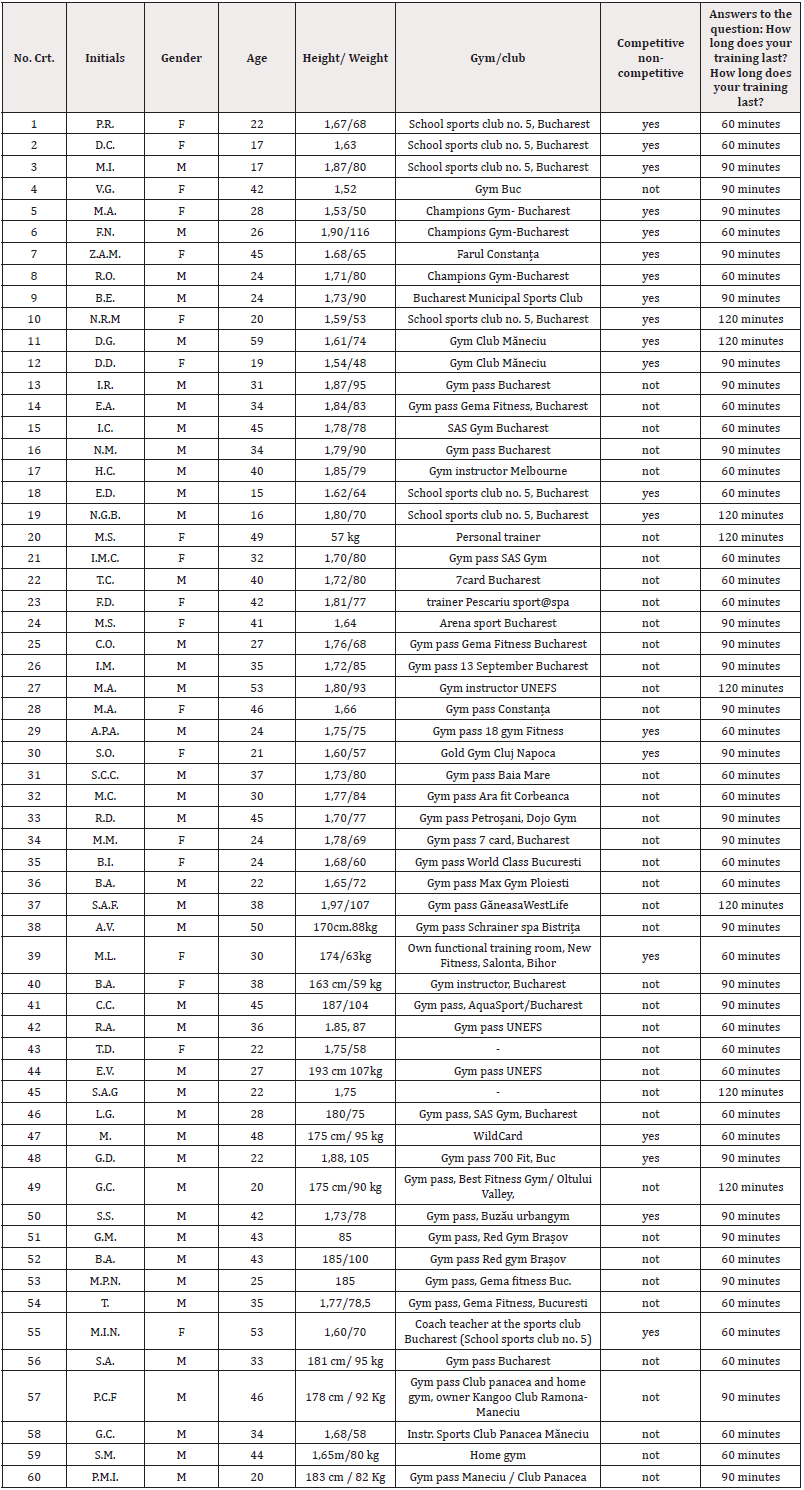
Table 2: Presentation of respondents’ data and their answers regarding the duration of training.
IG: intervention group; CG: control group
The questionnaire was completed by a number of 40 athletes who subscribed to the gym but non-competitive and 20 legitimate athletes at a sports club participating in national or international competitions according to the competition calendar of the Romanian Bodybuilding and Fitness Federation (of which 9 sportswomen and 11 sportsman), a third of the respondents are legitimate persons at a Sports Club and 2/3 subscribers to a fitness room or with their own gym (of which 10 women and 30 men) but illegitimate to a sports club in order to participate in bodybuilding and fitness competitions.
The youngest practitioner is 17 years old, describing the predominant feeling of happiness, the oldest, being 59 years old, feeling fulfillment. The longest-lived non-competitive practitioner has been attending bodybuilding and fitness gyms for 29 years, similar to the 43-year-old competitive athlete, which proves that the weight training routine is part of the lifestyle. All respondents answered yes to the question of whether they developed a muscular sense, its presence could be correlated with muscle tone, controlled and visible contraction of one or more muscle groups, new muscle striations, decrease or increase in muscle mass and strength, fever felt after training, the shape and visibility of muscle striations depending on the thickness of the fat layer.
Most do not need breaks after a period of several months of training, their continuation representing the routine integrated into the lifestyle adopting in their opinion a healthy style, overcoming the barrier of physical and mental fatigue. As can be seen in Figure 4, almost half, 43.3% of respondents do not take a break, training continuously so that the body‘s adaptation to specific effort and force fluctuations does not reach a regressive or downward plateau. The accessibility of weight training at any age and any profession so the healthy lifestyle based on the triad movement-healthy eating-rest, specific to athletes especially bodybuilding and fitness emphasizes body aesthetics and emphasizes self-esteem (Figures 5,6).
A clear difference is given by the difference in weight in the training period between competitions compared to the precompetition period, a stage in which competitive athletes lose 4 to 10 kg of body weight, especially the thickness of the fat layer to achieve muscle relief and sports participation in the category for which they have the best chance of ranking in a better place, while non-competitors do not have a clear representation or a welldefined goal like competitors. Most athletes include in the training of a muscle group a basic exercise that addresses mainly the worked muscle group (but to achieve movement, other muscles are also synergistically contracted) to facilitate the increase of muscle strength and mass (Figure 7).
As can be seen in the Figure 8, a percentage of 70% of the participants in the study perform an increased number of repetitions between 8-14, specific to the development of muscle mass. Regarding the duration of training, the number of sets and repetitions per muscle group and for each exercise, they vary depending on the training period and the status of competitive or non-competitive practitioners. Muscle hypertrophy or increased muscle size is the main goal of bodybuilding by making large changes in muscle chemistry, so muscle mass develops more as a result of contraction of muscle fiber elements (myosin filaments) than an increased flow of fluid and plasma., as is usually the case. This explains why the strength of bodybuilders is not always proportional to their body size.
In bodybuilding, typical sub-maximum loads are mainly used, athletes contracting muscles to the point of refusal and the contraction of muscle fibers varies as follows: when some get tired, others start working. It is very important to perform the maximum number of repetitions in a series, usually between 6-12, if the weight is too light the load is increased and vice versa so that the stimulation of the muscle creates sufficient tension during the executions. In effort, the resistance to constant tension varies depending on the number of repetitions. With a higher number of repetitions, the weight felt to be relatively small at the beginning of the exercise becomes sub-maximum and then maximum when the last repetition ends. The cumulative effects of a higher number of repetitions lead to a higher total weight but also to the thickening of the muscle fibers.
Specific to bodybuilding and fitness training is the analytical work on muscle groups, almost 77% of respondents following this principle. Those who train daily perform specific exercises lasting 60 minutes, a percentage of 41.7% train 90 minutes 3-4 workouts per week while only 13.3% of respondents spend 120 minutes in the gym. The answers can be considered appropriate for the training period, or the goal pursued knowing that in the period of strength and muscle mass are effective short and intense workouts with heavy weights, while in the pre-competitive phase to achieve muscle relief or only for weight loss increases the training and volume and intensity, against the background of medium intensity efforts (Figures 9-12).
The method of weight gain and loss is included in the training of half of the study participants, while the method of repetitions to the point of rejection and the circuit are used in equal percentages of 18.3%, only 8.3% performing forced repetitions. Fear of injury and interruption of training for recovery, maladaptation, large loss of strength and muscle mass determine caution in choosing the method of forced repetitions with a partner even if the strength may increase more than with other methods. Obviously, not all respondents have the motivation and energy to perform most of the exercises in training until exhaustion, however a percentage of about 30% can perform high and very high intensity training (Figures 13- 16). The consumption of anabolic substances was specified only by 4 non-competitive practitioners, the question being uncomfortable especially for athletes participating in competitions.
Regarding the number of calories and the supplementation of the diet with protein, supportive effort, antioxidants, vitamins and minerals, not all resonated with a complete answer, especially those with less experience and obviously with low energy consumption in relation to size and duration, effort and last but not least on purpose, participation in competitions requiring a specific physical shape in relation to the size of the muscle mass and the thickness of the fat layer as well as the constitutional type. At the same time, the adaptation of the training to the competitive period results from the participants’ answers by including some cardio workouts, the increase no. of training, volume and intensity of effort, strict regime and for those who are not competitive for body image with well-defined muscles and tonics without fat layer. The number of kilograms lost in an interval of 2-3 months before participating in competitions for competitors varying between 5-10 kg depending on the competition category, non-competitors maintaining an almost constant weight with small fluctuations.
Asked if practicing bodybuilding and fitness helps them have a healthier lifestyle and ask them to briefly argue with others, most answered in the affirmative, with arguments including “the benefits on the psyche that a performance sport and a healthier life bring. , strengthening the immune system, as well as “This sport teaches you to eat properly, to maintain an active lifestyle and you get to know your body much better.”
Regarding the emotions/feelings before, during and after training, they were briefly described, some of the respondents using a word full of positive connotations “wonderful” and “invincible”, the predominant feelings/feelings being those of happiness, ambition, enthusiasm, well-being, before-determination, after-fatigue, a state of well-being, the desire to be better and to evolve, with pleasure, a very good general condition both before and after training, because I go for pleasure and with love to training, fulfillment, motivation, well-being, pleasure before and after training, before melancholic training, after energetic and well-disposed training, the desire to release negative energy accumulated during the day and after, relaxation, enthusiasm, satisfaction, gratitude, self-improvement, relaxation, full of energy, before enthusiasm, after pain, hunger and enthusiasm, pleasure and pain, fatigue due to work schedule, before training, motivated, after satisfied and with a state of well-being, zest for life a feeling, good mood and well-being, desire, challenge, fulfillment, before decision, after, thanks, joy, relaxation, well-being, energy for a night, very good mood, relaxation, disconnection from everyday problems, gratitude, before determination and after feeling alive, liberation, gratitude and self-confidence (Figures 17,18).
Muscle work during a workout is a very large number of kilograms lifted/pulled for the training of two muscle groups, including two basic exercises and two isolation exercises for the large muscle group, respectively a basic exercise and two isolation exercises for a group of medium or small muscles can reach a cumulative weight of up to 10 tons or more, which denotes the ability to exert effort and concentration, overcoming physical barriers (by working to the point of refusal, forced repetitions, negatives, dropsets) and mental motivation, self-determination and overcoming one’s own limits for continuous adaptation to the specific effort of bodybuilding training.
When asked why they chose to practice bodybuilding and fitness, the respondents caught aspects varying positively in the sense of feelings from well-being, health, recovery, to passion, way of life. From the point of view of the profession, one can observe the diversity of occupations, from commercial workers to police and doctors, most of them having studies as a bodybuilding and fitness instructor or coach. As can be seen in the Figure 19, the maximum weight for pushing with the chest bar is 140 kg or with dumbbells is 40-50 kg each, which compared to an athlete’s weight of 70-80 kg is double which denotes that they are also very strong not only muscular. In the female, the pectoral muscles do not have to be worked much because it gives a masculine appearance diminishing femininity, consequently they work more with dumbbells or in pulleys using medium weights, however depending on the category in which some athletes compete they can reach weights that exceed their own weight corporal.
The number of tractions varies from athlete to athlete, some adding extra weight to the belt, others not performing this exercise because it is a demanding exercise and requires a strong grip on the traction bar. As it is also a basic exercise for strength and muscle mass that addresses especially the triceps muscles, additional weights can be added to the belt, beginner athletes can only perform more than 6 repetitions after a few months.
As can be seen in the graphs at the (Figures 19-21), athletes are quite strong, especially those who train for at least 2 years, aged between 20-30 years and participate in bodybuilding and fitness competitions, because the force level can reach maximum values. The essential characteristic of man is to present himself as an individual, a unique result of the convergence of a multitude of biological, psychological, social and cultural factors that give him uniqueness in both the mental and behavioral spheres. That is why a holistic approach at national level is needed to capture and identify all the physical, mental and social aspects of the routine of bodybuilders and fitness practitioners.
The specialized literature in Romania is rich in terms of the methodological framework, the content of training programs, but it insufficiently treats the personality of athletes. Such approaches have been initiated in established sports with remarkable results of Romanian athletes and case studies of great champions, but in order to reach a hierarchy of differences and similarities of mental effects, the scope of research to all sports must be increased. At national level, studies and research are elaborated on the motivation and practice of bodybuilding and fitness in an organized setting, respectively school, college, being very few approaches at the level of performance, level that involves physical, mental, medical and nutritional monitoring specific training according to the competitive calendar. We note an important number of articles published in international databases of Romanian specialists addressing the field of sports psychology as well as published volumes, which present and theorize approaches, concepts and psychic means that implemented in a specific action system contributes to improving performance sports.
Given the growing attention paid to physical appearance, the development and diversification of fitness centers worldwide, it offers countless opportunities to meet the need for exercise through weight training at the gym that gives users the opportunity to achieve their goals reflected especially in the physical and mental because analytical exercises with weights require physical, mental and social involvement. We conducted a review of existing studies and research on bodybuilders’ motivation, endurance training, the involvement of certain types of muscle fibers depending on the dosage of effort and metabolic studies on the effects of weight training in different training periods.
Most studies and research have been and are initiated by specialists from America, but Europeans have also captured and researched countless aspects specific to the practice of bodybuilding and fitness. Practicing bodybuilding and fitness develops a perception of one’s body, a special kinesthetic or muscular sense that can be seen not only felt in competition by displaying physique and musculature, but a sense also identified in all respondents, which could be investigated and evaluated by measuring muscle tone. and active muscle mass.
Given that bodybuilders and fitness practitioners model their physique by analytical training of all muscle groups performing exercises to the point of refusal, through a specific effort of strength training in endurance, self-determination, self-improvement and continuous struggle with weights disciplines and develops indispensable routine to maintain a harmonious, toned, imposing, admired and implicit physical appearance with an iron will be driven by thousands of kilograms lifted at the gym.
Conclusions
The muscular sense was perceived by all respondents regardless of experience, similar to the sense of ice in skating, of the rocket in tennis, of the ball in football, of the basket in basketball, of the target in shooting and the examples can continue. Muscle fever was recognized by most participants as an important effect of training efficiency. The dosage of training is higher in terms of volume and intensity in competitive versus non-competitive. The predominant feelings of practitioners expressed by the words pleasure, fulfillment, happiness, passion, ambition, determination, combativeness, reflect the longevity, aspirations and results of certain practitioners and the maintenance of normal / ideal anthropometric indices related to age and gender. Continuing to practice fitness and bodybuilding training is mostly motivated by the desire to have a healthy lifestyle, followed by the desired physical appearance/sports form to compete or become a champion. Competitive or non-competitive athletes practicing weight training have similar training routines, motivated by emotions or feelings depending on the proposed goal.
Motivation in terms of emotions experienced or goals pursued influences the routine of weight training in all respondents, they learn the specific notions of effective training according to the proposed goals, obviously the motivation and level of training being high for performance athletes. Motivational mechanisms that explain impulse development for muscular behaviors could be better understood through complementary analyzes of motivational profiles. Performing specific bodybuilding and fitness training determines the formation of a weekly routine influenced by the intensity of emotions and feelings of practitioners in order to achieve the proposed goals which is higher for competitive practitioners than for non-competitive ones.
Discussion
The essential characteristic of man is to present himself as an individual, a unique result of the convergence of a multitude of biological, psychological, social and cultural factors that give him uniqueness in both the mental and behavioral spheres. That is why a holistic approach at national level is needed to capture and identify all the physical, mental and social aspects of the routine of bodybuilders and fitness practitioners. The specialized literature in Romania is rich in terms of the methodological framework, the content of training programs, but it insufficiently treats the personality of athletes. Such approaches have been initiated in established sports with remarkable results of Romanian athletes and case studies of great champions, but in order to reach a hierarchy of differences and similarities of mental effects, the scope of research to all sports must be increased.
At national level, studies and research are elaborated on the motivation and practice of bodybuilding and fitness in an organized setting, respectively school, college, being very few approaches at the level of performance, level that involves physical, mental, medical and nutritional monitoring specific training according to the competitive calendar. We note an important number of articles published in international databases of Romanian specialists addressing the field of sports psychology as well as published volumes, which present and theorize approaches, concepts and psychic means that implemented in a specific action system contributes to improving performance sports.
Given the growing attention paid to physical appearance, the development and diversification of fitness centers worldwide, it offers countless opportunities to meet the need for exercise through weight training at the gym that gives users the opportunity to achieve their goals reflected especially in the physical and mental because analytical exercises with weights require physical, mental and social involvement. We conducted a review of existing studies and research on bodybuilders’ motivation, endurance training, the involvement of certain types of muscle fibers depending on the dosage of effort and metabolic studies on the effects of weight training in different training periods. Most studies and research have been and are initiated by specialists from America, but Europeans have also captured and researched countless aspects specific to the practice of bodybuilding and fitness.
Practicing bodybuilding and fitness develops a perception of one’s body, a special kinesthetic or muscular sense that can be seen not only felt in competition by displaying physique and musculature, a sense identified in all respondents, which could be investigated and evaluated by measuring muscle tone. and active muscle mass.
Given that bodybuilders and fitness practitioners model their physique by analytical training of all muscle groups performing exercises to the point of refusal, through a specific effort of strength training in endurance, self-determination, self-improvement and continuous struggle with weights disciplines and develops indispensable routine to maintain a harmonious, toned, imposing, admired and implicit physical appearance with an iron will driven by thousands of kilograms lifted at the gym [20].
The muscular sense was perceived by all respondents regardless of experience, similar to the sense of ice in skating, of the rocket in tennis, of the ball in football, of the basket in basketball, of the target in shooting and the examples can continue. Muscle fever was recognized by most participants as an important effect of training efficiency. The dosage of training is higher in terms of volume and intensity in competitive versus non-competitive. The predominant feelings of practitioners expressed by the words pleasure, fulfillment, happiness, passion, ambition, determination, combativeness, reflect the longevity, aspirations and results of certain practitioners and the maintenance of normal/ideal anthropometric indices related to age and gender. Continuing to practice fitness and bodybuilding training is mostly motivated by the desire to have a healthy lifestyle, followed by the desired physical appearance/sports form to compete or become a champion.
Competitive or non-competitive athletes practicing weight training have similar training routines, motivated by emotions or feelings depending on the proposed goal. Motivation in terms of emotions experienced or goals pursued influences the routine of weight training in all respondents, they learn the specific notions of effective training according to the proposed goals, obviously the motivation and level of training being high for performance athletes. Motivational mechanisms that explain impulse development for muscular behaviors could be better understood through complementary analyzes of motivational profiles. Performing specific bodybuilding and fitness training determines the formation of a weekly routine influenced by the intensity of emotions and feelings of practitioners in order to achieve the proposed goals which is higher for competitive practitioners than for non-competitive ones.
References
- Nikityuk E (2019) Kalokagathia: to a Question on Formation of an Image of the Ideal Person in Antiquity and During Modern Time. Antigua andarchaeological studies 25(2): 429-442.
- Wisniewska Nogaj L (2019) Symptoms of muscle dysmorphia in male gym users. Psychiatry and clinical psychology 19(2): 129-142.
- Deschenes M, Kraemer WJ (2002) Performance and physiologic adaptations to resistance training. American journal of physical medicine & rehabilitation, 81(11): S3-S16.
- Ionescu A, Anton B (2004) Dirijarea medicală a efortului [Medical effort management].
- Golu M (2005) Bazele psihologiei generale [The basics of general psychology]. Universitară.
- Chaba L, d'Arripe Longueville F, LentillonKaestner V, Scoffier Meriaux S (2019) Drive for muscularity behaviors in male bodybuilders: a trans-contextual model of motivation. J Eat Disord 7(1): 1-11.
- Predoiu R (2021) Psihologia sportivă și făuritorii performanței [Sports psychology and performance makers]. Hoffman.
- Cyrino ES, Sobrinho JMS, Maesta N, Nardo N, dos Reis DA, et al. (2008) Morfological profile of elite brazilian bodybuilders in competitive season. Brazilian Journal of Sports Medicine 14(5): 460-465.
- Alves RC, Prestes J, Enes A, de Moraes WMA, Trindade TB, et al. (2020) Training Programs Designed for Muscle Hypertrophy in Bodybuilders: A Narrative Review. Sports 8(11): 1-15.
- de Liz CM, Viana MD, Dominski FH, Andrade A (2018) Physical exercise in gyms: perspectives of the self-determination theory. Ibero-American journal of exercise and sport psychology13(2): 235-243.
- Moreno-Murcia JA, Silva FB, Pardo PJM, Rodriguez ACS, Hernandez EH (2012) Motivation, frequency and activity type in physical exercise participants. International journal of medicine and science of physical activities and sports 12(48): 649-662.
- Ibarzabal F, Tubio, J (2008) Personality traits in bodybuilders and relationships with anthropometric variables and sport behavior. Journal of Sports Psychology 17(1): 85-102.
- Bompa TO, Haff GG (2014) Periodizarea. Teoriași metodologia antrenamentului [Periodization. Training theory and methodology].
- Damas F, Libardi CA, Ugrinowitsch C (2018) The development of skeletal muscle hypertrophy through resistance training: the role of muscle damage and muscle protein synthesis. European journal of applied physiology 118(3): 485-500.
- Grgic J, Homolak J, Mikulic P, Botella J, Schoenfeld BJ (2018) Inducing hypertrophic effects of type I skeletal muscle fibers: A hypothetical role of time under load in resistance training aimed at muscular hypertrophy. Medical hypotheses 112: 40-42.
- Dettore D, Fabris, MA, Santarnecchi E (2020) Differential prevalence of depressive and narcissistic traits in competing and non-competing bodybuilders in relation to muscle dysmorphia levels. Journal of psychiatry and clinical psychology 20(2): 102-111.
- Fink J, Schoenfeld BJ, Kikuchi N, Nakazato K (2017) Effects of drop set resistance training on acute stressindicators and long-term muscle hypertrophy and strength. J Sports Med Phys Fitness 58(5): 597-605.
- Tudor V, Crișan DI (2007) Forț Aptitudine motrică [Force. Motor skills] Bren.
- Arraes CT, Melo RD (2020) Negotiating limits, managing excesses: daily experiences of a group of bodybuilders. Movement, 26(e26051): 1-16.
- (2019) nutritie-sportiva/antrenamente/ghid-de-antrenament-weider.

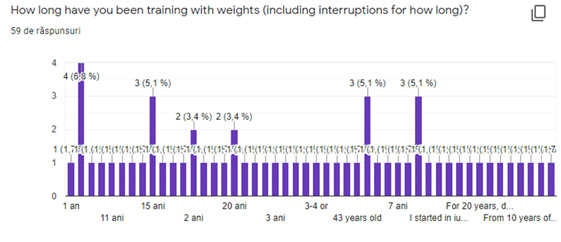





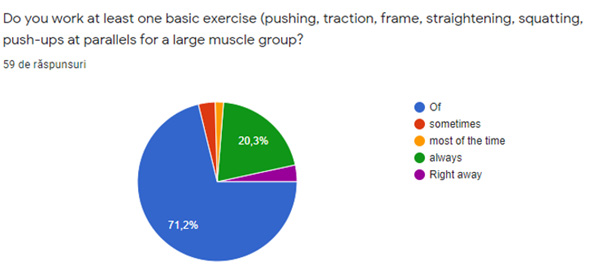
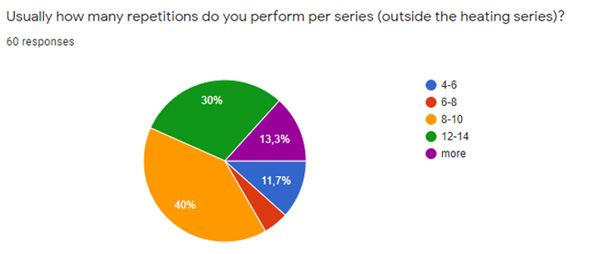



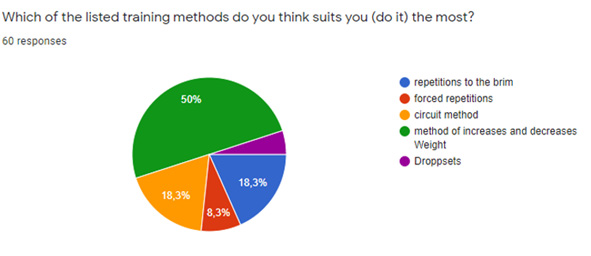
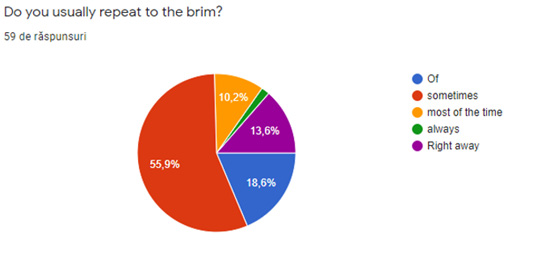

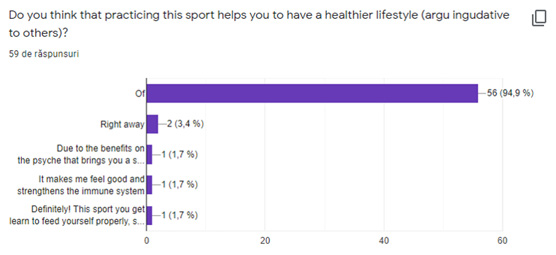

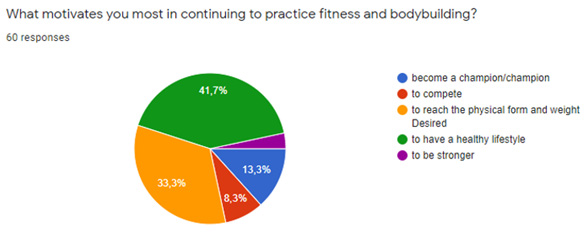

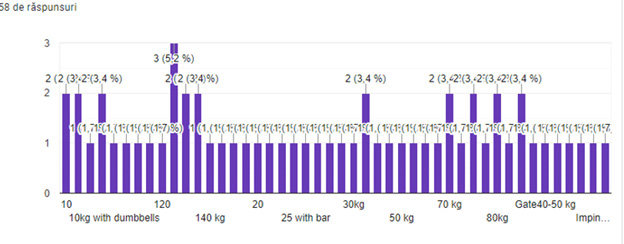

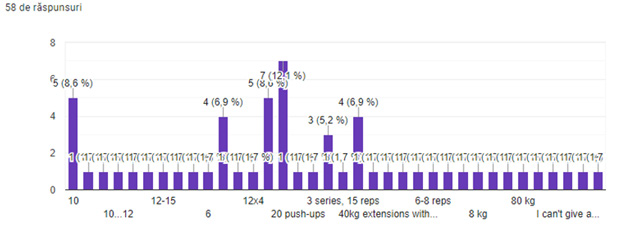


 We use cookies to ensure you get the best experience on our website.
We use cookies to ensure you get the best experience on our website.